MaryAnn Bernal's Blog, page 249
August 12, 2014
History Trivia - Cleopatra VII Philopator, the last ruler of the Egyptian Ptolemaic dynasty, commits suicide
August 12
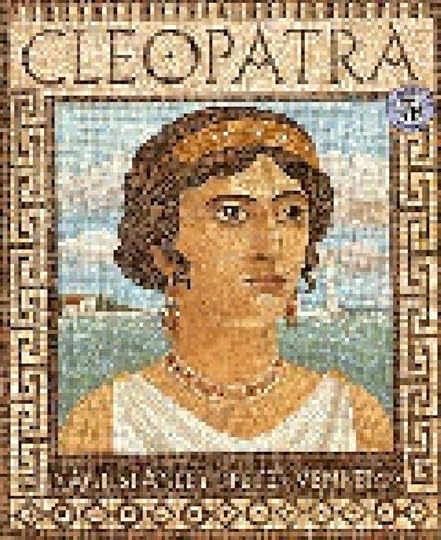
30 BC –Cleopatra VII Philopator, the last ruler of the Egyptian Ptolemaic dynasty, committed suicide, allegedly by means of an asp bite.
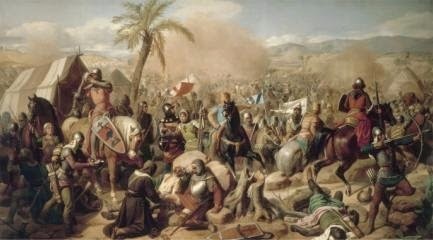
1099 First Crusade: Battle of Ascalon: Crusaders under the command of Godfrey of Bouillon defeated Fatimid forces led by Al-Afdal Shahanshah. This is considered the last engagement of the First Crusade.
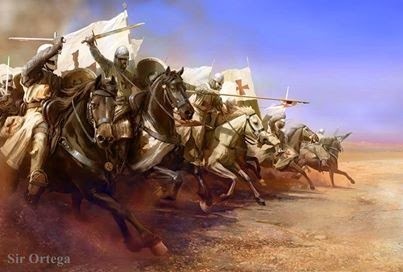
1164 Battle of Harim: Nur ad-Din Zangi defeated the Crusader armies of the County of Tripoli and the Principality of Antioch.

1332 Battle of Dupplin Moor was fought between supporters of David II, infant son of Robert the Bruce and rebels supporting the Balliol claim in 1332, and is a significant battle of the Second War of Scottish Independence.
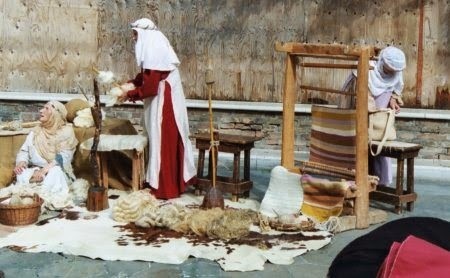
1336 England's King Edward III ended wool export to Flanders.
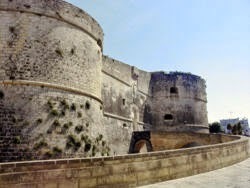
1480 Battle of Otranto - Ottoman troops beheaded 800 Christians for refusing to convert to Islam.


30 BC –Cleopatra VII Philopator, the last ruler of the Egyptian Ptolemaic dynasty, committed suicide, allegedly by means of an asp bite.

1099 First Crusade: Battle of Ascalon: Crusaders under the command of Godfrey of Bouillon defeated Fatimid forces led by Al-Afdal Shahanshah. This is considered the last engagement of the First Crusade.

1164 Battle of Harim: Nur ad-Din Zangi defeated the Crusader armies of the County of Tripoli and the Principality of Antioch.

1332 Battle of Dupplin Moor was fought between supporters of David II, infant son of Robert the Bruce and rebels supporting the Balliol claim in 1332, and is a significant battle of the Second War of Scottish Independence.

1336 England's King Edward III ended wool export to Flanders.

1480 Battle of Otranto - Ottoman troops beheaded 800 Christians for refusing to convert to Islam.

Published on August 12, 2014 05:20
August 11, 2014
Archaeology museum rediscovers 6,500-year-old skeleton in storage
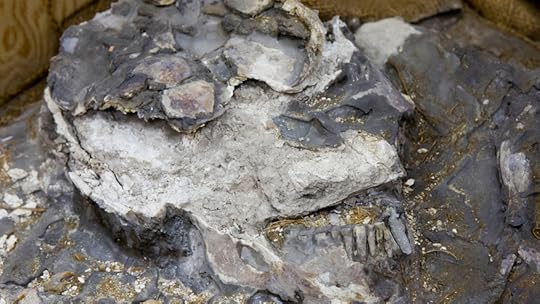
6,500-year-old human remains are displayed at the The Penn Museum, part of the University of Pennsylvania, Tuesday, Aug. 5, 2014, in Philadelphia.AP PHILADELPHIA – An archaeology museum in Philadelphia has made an extraordinary find — in its own storage rooms.
The Penn Museum, part of the University of Pennsylvania, announced Tuesday that it had rediscovered a 6,500-year-old human skeleton believed to have been a man at least 50 who stood 5 feet, 9 inches tall. The remains were originally excavated from southern Iraq around 1930.
Museum officials said the complete human skeleton had been stored in a coffin-like box but with no trace of identifying documentation.Skeletons of the same time period, particularly complete remains, are extremely rare, the Penn researchers said. They hope a skeletal analysis will reveal more about the population's diet, stresses and ancestral origins.
University of Pennsylvania researchers working with a team from the British Museum first unearthed the remains at the site of Ur, an ancient city near modern-day Nasiriyah.
Dr. Janet Monge, the curator-in-charge of the anthropology section of the Penn Museum, had known the skeleton was in storage, but researchers weren't able to determine its significance until a records digitization project was undertaken, officials said.
The effort enabled the researchers to link the skeleton to the field records of Sir Leonard Woolley, whose joint team excavated the site where it was uncovered.
The burial that produced the skeleton was cut into deep silt, indicating that the man had lived after an epic flood, leading Penn researchers to nickname their re-discovery "Noah."
http://www.foxnews.com/science/2014/08/05/archaeology-museum-rediscovers-6500-year-old-skeleton-in-storage/

Published on August 11, 2014 14:41
Chianti Wine Ancestor Found
by Rossella Lorenzi
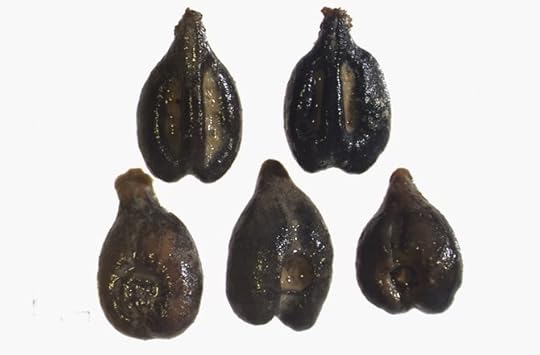 Waterlogged grape seeds retrieved from the Cetamura well.
Waterlogged grape seeds retrieved from the Cetamura well.
Gaetano Di Pasquale U.S. archaeologists may have found the ancestor of Chianti wine in an ancient well in the Chiantishire region of Tuscany.
Found in Cetamura, an ancient hilltop near Gaiole in Chianti in the province of Siena, the 105-foot-deep well yielded a bonanza of artifacts such as bronze vessels, cups, statuettes, coins and game pieces. The objects span a period of more than 15 centuries and embrace Etruscan, Roman and medieval civilization in Tuscany.
The most precious material, though, might be some 500 waterlogged grape seeds.
Found in at least three different levels of the well, which include the Etruscan and Roman levels, the perfectly preserved pips can provide key insights into the history of viticulture in a region now famous for its bold reds.
"The seeds were found at levels ranging from the third century B.C. to the first century A.D. Since they are not burned, they might carry preserved DNA," Nancy de Grummond, a professor of classics at Florida State, told Discovery News.
De Grummond, who has performed work at Cetamura since 1983, has been excavating the well for the past four years under the supervision of the Archaeological Superintendency of Tuscany and with the help of the Italian archaeological firm of Ichnos, directed by Francesco Cini.
The seeds were subjected to analysis at the lab of vegetation history and wood anatomy of the University of Naples Federico II. There, researchers led by Gaetano di Pasquale processed the obtained data with statistical software in order to highlight differences of size and shape for each pip.
It is known that seeds of wild grape (Vitis vinifera subsp. Sylvestris), the ancestor common to all cultivated species, is smaller and rounder, while cultivated grapes have bigger and elongated pips.
"The first results seem to indicate the Etruscans had a more advanced viticulture compared to the Romans. Roman seeds appear to be wild, suggesting less cultivated species were grown at that time," Di Pasquale told Discovery News.
"In any case, it is very likely that different grapes grew in Cetamura in Etruscan and Roman times," he added.
The recipe for Chianti Classico was standardized by Baron Bettino Ricasoli in the mid-19th century and called for 70 percent Sangiovese to be blended with 15 percent red Canaiolo and 15 percent white Malvasia.
Whether the Etruscans or the Romans used a composition similar to modern Chianti is not known.
The challenge for Di Pasquale's team is to identify and name the waterlogged seeds.
"An answer could come from ancient DNA analysis, but we are still at an experimental stage," Di Pasquale said.
Meanwhile, archaeologists were able to put into context the grape pips as they unearthed many objects associated with wine serving and drinking and numerous ceramic vessels related to wine storage.
"A curious detail is that the grape seeds were often found inside the bronze buckets, perhaps indicating a ritual element," de Grummond said.
She noted the seeds were also found at the very bottom of the well, along with olive pits and hazel nuts, very likely offerings made at the time when the well was completed.
A large amount of well-preserved wood, probably also part of the offerings, was also recovered from the bottom.
"Many of the pieces of wood were worked, and already several objects have been identified: parts of wooden buckets, a spatula or spoon, a spool, a rounded object like a knob or child's top," de Grummond said.
These and other finds -- from animal bones to numerous worked and unworked deer antlers -- suggest that cult activity took place at the well.
"Like other water sources in antiquity, the well was regarded as sacred," de Grummond said.
"Two Etruscan gods, named Lur and Leinth, were worshiped in a nearby sanctuary of Cetamura as gods of good fortune. They were probably the deities of the place," she added.
Offerings found in the well included hundreds of miniature votive cups, some 70 bronze and silver coins, and numerous pieces used in games of fortune, such as astragali, which are akin to jacks.
Among the most notable finds are 14 Roman and Etruscan bronze vessels, of different shapes and sizes and with varying decorations, that had been used to extract water.
One of the Etruscan vessels, actually a wine bucket, appears finely tooled and decorated with figurines of the marine monster Skylla, while another is adorned with a bronze finial of the head of a feline with the mane of a lion and the spots of a leopard. African heads, probably sphinxes, worked as handle attachments.
"This rich assemblage of materials and remarkable evidence of organic remains such as the grape seeds, create an unparalleled opportunity for the study of culture, religion and daily life in Chianti and the surrounding region," de Grummond said.
http://news.discovery.com/history/archaeology/chianit-wine-ancestor-found-1408111.htm
 Waterlogged grape seeds retrieved from the Cetamura well.
Waterlogged grape seeds retrieved from the Cetamura well. Gaetano Di Pasquale U.S. archaeologists may have found the ancestor of Chianti wine in an ancient well in the Chiantishire region of Tuscany.
Found in Cetamura, an ancient hilltop near Gaiole in Chianti in the province of Siena, the 105-foot-deep well yielded a bonanza of artifacts such as bronze vessels, cups, statuettes, coins and game pieces. The objects span a period of more than 15 centuries and embrace Etruscan, Roman and medieval civilization in Tuscany.
The most precious material, though, might be some 500 waterlogged grape seeds.
Found in at least three different levels of the well, which include the Etruscan and Roman levels, the perfectly preserved pips can provide key insights into the history of viticulture in a region now famous for its bold reds.
"The seeds were found at levels ranging from the third century B.C. to the first century A.D. Since they are not burned, they might carry preserved DNA," Nancy de Grummond, a professor of classics at Florida State, told Discovery News.
De Grummond, who has performed work at Cetamura since 1983, has been excavating the well for the past four years under the supervision of the Archaeological Superintendency of Tuscany and with the help of the Italian archaeological firm of Ichnos, directed by Francesco Cini.
The seeds were subjected to analysis at the lab of vegetation history and wood anatomy of the University of Naples Federico II. There, researchers led by Gaetano di Pasquale processed the obtained data with statistical software in order to highlight differences of size and shape for each pip.
It is known that seeds of wild grape (Vitis vinifera subsp. Sylvestris), the ancestor common to all cultivated species, is smaller and rounder, while cultivated grapes have bigger and elongated pips.
"The first results seem to indicate the Etruscans had a more advanced viticulture compared to the Romans. Roman seeds appear to be wild, suggesting less cultivated species were grown at that time," Di Pasquale told Discovery News.
"In any case, it is very likely that different grapes grew in Cetamura in Etruscan and Roman times," he added.
The recipe for Chianti Classico was standardized by Baron Bettino Ricasoli in the mid-19th century and called for 70 percent Sangiovese to be blended with 15 percent red Canaiolo and 15 percent white Malvasia.
Whether the Etruscans or the Romans used a composition similar to modern Chianti is not known.
The challenge for Di Pasquale's team is to identify and name the waterlogged seeds.
"An answer could come from ancient DNA analysis, but we are still at an experimental stage," Di Pasquale said.
Meanwhile, archaeologists were able to put into context the grape pips as they unearthed many objects associated with wine serving and drinking and numerous ceramic vessels related to wine storage.
"A curious detail is that the grape seeds were often found inside the bronze buckets, perhaps indicating a ritual element," de Grummond said.
She noted the seeds were also found at the very bottom of the well, along with olive pits and hazel nuts, very likely offerings made at the time when the well was completed.
A large amount of well-preserved wood, probably also part of the offerings, was also recovered from the bottom.
"Many of the pieces of wood were worked, and already several objects have been identified: parts of wooden buckets, a spatula or spoon, a spool, a rounded object like a knob or child's top," de Grummond said.
These and other finds -- from animal bones to numerous worked and unworked deer antlers -- suggest that cult activity took place at the well.
"Like other water sources in antiquity, the well was regarded as sacred," de Grummond said.
"Two Etruscan gods, named Lur and Leinth, were worshiped in a nearby sanctuary of Cetamura as gods of good fortune. They were probably the deities of the place," she added.
Offerings found in the well included hundreds of miniature votive cups, some 70 bronze and silver coins, and numerous pieces used in games of fortune, such as astragali, which are akin to jacks.
Among the most notable finds are 14 Roman and Etruscan bronze vessels, of different shapes and sizes and with varying decorations, that had been used to extract water.
One of the Etruscan vessels, actually a wine bucket, appears finely tooled and decorated with figurines of the marine monster Skylla, while another is adorned with a bronze finial of the head of a feline with the mane of a lion and the spots of a leopard. African heads, probably sphinxes, worked as handle attachments.
"This rich assemblage of materials and remarkable evidence of organic remains such as the grape seeds, create an unparalleled opportunity for the study of culture, religion and daily life in Chianti and the surrounding region," de Grummond said.
http://news.discovery.com/history/archaeology/chianit-wine-ancestor-found-1408111.htm

Published on August 11, 2014 14:35
All Hail King Richard! Details of Elaborate Burial Unveiled
By Jeanna Bryner
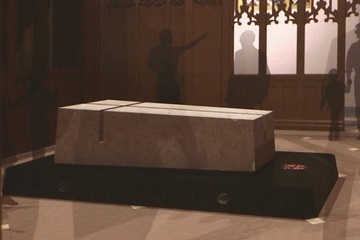 King Richard III's stone tomb will sit on a slab of dark Kilkenny marble, which will be inscribed with the king's name, dates, motto and coat of arms.
King Richard III's stone tomb will sit on a slab of dark Kilkenny marble, which will be inscribed with the king's name, dates, motto and coat of arms.
Credit: Video Screengrab, Diocese of Leicester
After years of heated controversy over the rightful resting spot for King Richard III, officials have finally decided on the reinterment details for the remains of the 15th-century English ruler.
His remains will be laid to rest on Thursday, March 26, 2015, in Leicester Cathedral during one of three services to honor the English king, the University of Leicester announced yesterday (Aug. 7).
The king's remains, which were discovered beneath a city council parking lot in Leicester, England, in 2012, will be tucked away in a tomb made of Swaledale fossil stone crafted by Michael Ibsen, a descendant of King Richard III's sister Anne of York. That design was unveiled on June 16.
A judicial review concluded on May 23 that the University of Leicester had the legal right to reinter Richard III's remains, after controversy erupted by Richard enthusiasts, including the Plantagenet Alliance, who claimed the king should be reburied in York, England, where he spent a good chunk of his life.
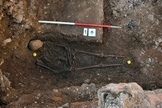
[image error] The remains of King Richard III, who died in 1485, discovered under a parking lot in Leicester, England.
The remains of King Richard III, who died in 1485, discovered under a parking lot in Leicester, England.
Credit: University of Leicester
View full size imageKing Richard ruled England from 1483 to 1485, when he died at the Battle of Bosworth, the final battle in the War of the Roses, the civil war between the Houses of York and Lancaster. The king's body was buried in a hastily dug grave three days later, according to historical records and research published last May in the journal Antiquity. Once the remains were discovered, they underwent extensive study that included a look at the skeleton's physical characteristics and its DNA. After confirming the identity of the bones, researchers and others involved began to discuss the reburial. [Gallery: The Search for Richard III in Photos]
"Our cathedral has been consistently committed to providing a fitting, dignified and memorable ceremony for the reinterment of King Richard," Rt. Rev. Tim Stevens, Bishop of Leicester, said in a statement. "We can now see how this works out in detail, and our city and county look forward to all the events of next spring."
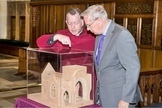
[image error] The Very Rev. David Monteith with His Royal Highness the Duke of Gloucester in Leicester Cathedral looking at the model of the space being created for the tomb of King Richard III.
The Very Rev. David Monteith with His Royal Highness the Duke of Gloucester in Leicester Cathedral looking at the model of the space being created for the tomb of King Richard III.
Credit: Leicester Cathedral
View full size imageThe reburial will include much fanfare. On March 22, the university will place the king's remains into a lead-lined coffin, which will then be transferred from Leicester to Bosworth, as the villages linked in some way to Richard III's last days before his death in 1485 will be honored. The coffin will return to Leicester that evening, arriving at the Leicester Cathedral, where they'll be handed over to the church during a service.
King Richard III's remains will lie in repose for three days, during which time the public can pay their respects. The first service, on March 26, will be followed by similar events on March 27 and 28.
This week, contractor Fairhurst Ward Abbotts has begun to make space for the king's tomb.
According to the design released in June, the king's remains will lie inside a lead ossuary placed inside an English-oak coffin — all of which will be placed inside a brick-lined vault in the cathedral floor and be enclosed in a stone tomb. The tomb will reside on a slab of dark Kilkenny marble inscribed with the king's name, dates, motto and coat of arms.
The tomb and reinterment is estimated to cost 2.5 million pounds ($4.2 million), according to the Very Rev. David Monteith of the Leicester Cathedral.
http://www.livescience.com/47256-king-richard-burial-set.html

 King Richard III's stone tomb will sit on a slab of dark Kilkenny marble, which will be inscribed with the king's name, dates, motto and coat of arms.
King Richard III's stone tomb will sit on a slab of dark Kilkenny marble, which will be inscribed with the king's name, dates, motto and coat of arms.Credit: Video Screengrab, Diocese of Leicester
After years of heated controversy over the rightful resting spot for King Richard III, officials have finally decided on the reinterment details for the remains of the 15th-century English ruler.
His remains will be laid to rest on Thursday, March 26, 2015, in Leicester Cathedral during one of three services to honor the English king, the University of Leicester announced yesterday (Aug. 7).
The king's remains, which were discovered beneath a city council parking lot in Leicester, England, in 2012, will be tucked away in a tomb made of Swaledale fossil stone crafted by Michael Ibsen, a descendant of King Richard III's sister Anne of York. That design was unveiled on June 16.
A judicial review concluded on May 23 that the University of Leicester had the legal right to reinter Richard III's remains, after controversy erupted by Richard enthusiasts, including the Plantagenet Alliance, who claimed the king should be reburied in York, England, where he spent a good chunk of his life.

[image error]
 The remains of King Richard III, who died in 1485, discovered under a parking lot in Leicester, England.
The remains of King Richard III, who died in 1485, discovered under a parking lot in Leicester, England.Credit: University of Leicester
View full size imageKing Richard ruled England from 1483 to 1485, when he died at the Battle of Bosworth, the final battle in the War of the Roses, the civil war between the Houses of York and Lancaster. The king's body was buried in a hastily dug grave three days later, according to historical records and research published last May in the journal Antiquity. Once the remains were discovered, they underwent extensive study that included a look at the skeleton's physical characteristics and its DNA. After confirming the identity of the bones, researchers and others involved began to discuss the reburial. [Gallery: The Search for Richard III in Photos]
"Our cathedral has been consistently committed to providing a fitting, dignified and memorable ceremony for the reinterment of King Richard," Rt. Rev. Tim Stevens, Bishop of Leicester, said in a statement. "We can now see how this works out in detail, and our city and county look forward to all the events of next spring."

[image error]
 The Very Rev. David Monteith with His Royal Highness the Duke of Gloucester in Leicester Cathedral looking at the model of the space being created for the tomb of King Richard III.
The Very Rev. David Monteith with His Royal Highness the Duke of Gloucester in Leicester Cathedral looking at the model of the space being created for the tomb of King Richard III.Credit: Leicester Cathedral
View full size imageThe reburial will include much fanfare. On March 22, the university will place the king's remains into a lead-lined coffin, which will then be transferred from Leicester to Bosworth, as the villages linked in some way to Richard III's last days before his death in 1485 will be honored. The coffin will return to Leicester that evening, arriving at the Leicester Cathedral, where they'll be handed over to the church during a service.
King Richard III's remains will lie in repose for three days, during which time the public can pay their respects. The first service, on March 26, will be followed by similar events on March 27 and 28.
This week, contractor Fairhurst Ward Abbotts has begun to make space for the king's tomb.
According to the design released in June, the king's remains will lie inside a lead ossuary placed inside an English-oak coffin — all of which will be placed inside a brick-lined vault in the cathedral floor and be enclosed in a stone tomb. The tomb will reside on a slab of dark Kilkenny marble inscribed with the king's name, dates, motto and coat of arms.
The tomb and reinterment is estimated to cost 2.5 million pounds ($4.2 million), according to the Very Rev. David Monteith of the Leicester Cathedral.
http://www.livescience.com/47256-king-richard-burial-set.html

Published on August 11, 2014 14:27
Hereward the Wake by Charles Kingsley Narrated by: Sebastian Lockwood - on Audible, Kindle, iTunes
 Written by: Charles Kingsley Narrated by: Sebastian Lockwood
Written by: Charles Kingsley Narrated by: Sebastian Lockwood Hereward the Wake, the last of the Anglo/Saxon/Dane Vikings, will hold out against the impossible force of William the Conquerer. After the Battle of Hastings in 1066, Hereward, already a great hero, will end up at Saint Etheldredas' Island and Minster, Eely, with his wife, Torfrida, and mother, Lady Godiva. He will ride to battle on his magic mare, Swallow, followed on foot by his right hand man, Martin Lightfoot. This is the best of Charles Kingsley, written in rich language and narrated by storyteller Sebastian Lockwood, himself originally from Norfolk and a great admirer of Hereward the Wake. Audiblehttp://www.audible.com/pd/Classics/Hereward-the-Wake-Audiobook/B00DTV6PAQ/ref=a_search_c4_1_2_srTtl?qid=1407625752&sr=1-2#publisher-summary Kindlehttp://www.amazon.com/Hereward-the-Wake/dp/B00E0QWBDY/ref=sr_1_1?s=books&ie=UTF8&qid=1407625998&sr=1-1&keywords=Hereward+the+Wake+Sebastian+Lockwood iTuneshttps://itunes.apple.com/us/audiobook/hereward-the-wake-unabridged/id675815086

Published on August 11, 2014 04:52
History Trivia - Rodrigo Borgia elected Pope, taking the name Alexandeer VI
August 11
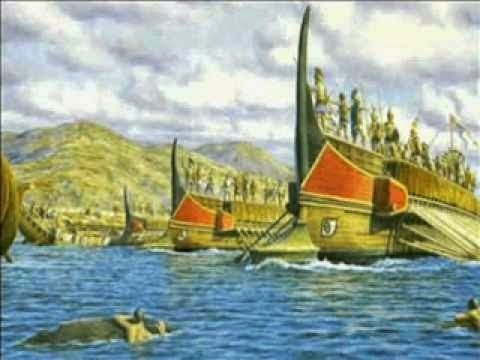
480 BC Greco-Persian Wars: Battle of Artemisium – the Persians won a naval victory over the Greeks in an engagement fought near Artemisium, a promontory on the north coast of Euboea (island of central Greece in the Aegean Sea).
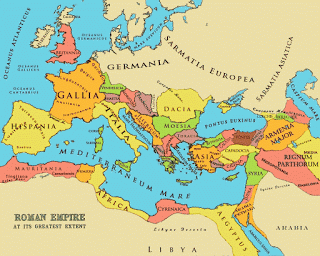
355 Claudius Silvanus, accused of treason, proclaimed himself Roman Emperor against Constantius II.
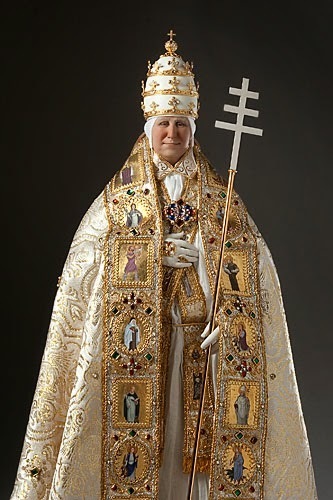
1492 Rodrigo Borgia became Pope Alexander VI. One of the most notorious men to sit on the papal throne, Alexander VI was worldly, ambitious and ruthless. However, he was a patron of the arts (Raphael, Michelangelo and Pinturicchio) and also encouraged the development of education as evidenced by the issuance of a Papal Bull at the request of William Elphinstone, Bishop of Aberdeen, and King James IV of Scotland, founding King’s College, Aberdeen.


480 BC Greco-Persian Wars: Battle of Artemisium – the Persians won a naval victory over the Greeks in an engagement fought near Artemisium, a promontory on the north coast of Euboea (island of central Greece in the Aegean Sea).

355 Claudius Silvanus, accused of treason, proclaimed himself Roman Emperor against Constantius II.

1492 Rodrigo Borgia became Pope Alexander VI. One of the most notorious men to sit on the papal throne, Alexander VI was worldly, ambitious and ruthless. However, he was a patron of the arts (Raphael, Michelangelo and Pinturicchio) and also encouraged the development of education as evidenced by the issuance of a Papal Bull at the request of William Elphinstone, Bishop of Aberdeen, and King James IV of Scotland, founding King’s College, Aberdeen.

Published on August 11, 2014 04:51
August 10, 2014
The Epic of Gilgamesh by Sebastian Lockwood - available on Kindle, Audible and iTunes

A new version of The Epic of Gilgamesh by Sebastian Lockwood. This is the story of Gilgamesh, King of Kings, who brought back knowledge from before the flood - who loved and lost his companion Enkidu and had to find out why we die.
The Epic of Gilgamesh was written on clay tablets over 4,000 years ago, in what is today Baghdad Iraq - the Biblical Garden of Eden between the Tigris and the Euphrates.
Having performed the story for years, Lockwood gives a passionate reading from a text that faithfully follows the original.
Audible
http://www.audible.com/pd/Classics/The-Epic-of-Gilgamesh-Audiobook/B00B02AVL0/ref=a_search_c4_1_2_srTtl?qid=1407624499&sr=1-2#publisher-summary
Kindle
http://www.amazon.com/The-Epic-of-Gilgamesh/dp/B00B0HYMJC/ref=sr_1_1?ie=UTF8&qid=1407624895&sr=8-1&keywords=The+Epic+of+Gilgamesh+Sebastian+Lockwood
iTunes
https://itunes.apple.com/us/audiobook/epic-gilgamesh-unabridged/id593303111

Published on August 10, 2014 05:03
History Trivia - Byrhtnoth, Ealdorman of Essex, defeated by a band of inland-raiding Vikings
August 10
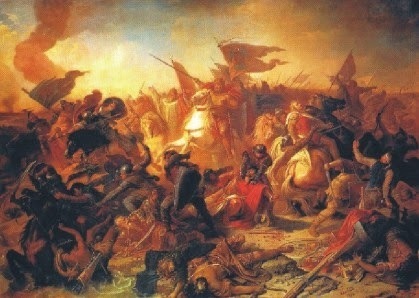
955 Battle of Lechfeld: Otto I, Holy Roman Emperor defeated the Magyars (Hungarians), ending 50 years of Magyar invasion of the West.

991 Battle of Maldon: the English, led by Byrhtnoth, Ealdorman of Essex, were defeated by a band of inland-raiding Vikings near Maldon in Essex.
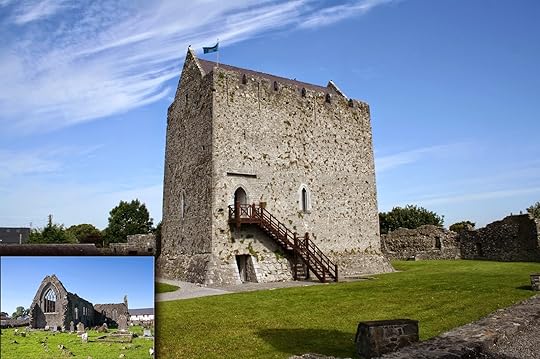
1316 The Second Battle of Athenry during the Bruce campaign in Ireland. The Second Battle of Athenry marked the definitive end of the power of the Ua Conchobair (O'Connor's) as Kings of Connacht. The decades following marked the high point of Norman rule in Connacht, and the rise of the towns of Athenry and Galway as centers of economic and political power and wealth. Unlike the First Battle of Athenry in 1249, no account is given of the battle itself in any surviving account, and even the site of the battle itself is uncertain.


955 Battle of Lechfeld: Otto I, Holy Roman Emperor defeated the Magyars (Hungarians), ending 50 years of Magyar invasion of the West.

991 Battle of Maldon: the English, led by Byrhtnoth, Ealdorman of Essex, were defeated by a band of inland-raiding Vikings near Maldon in Essex.

1316 The Second Battle of Athenry during the Bruce campaign in Ireland. The Second Battle of Athenry marked the definitive end of the power of the Ua Conchobair (O'Connor's) as Kings of Connacht. The decades following marked the high point of Norman rule in Connacht, and the rise of the towns of Athenry and Galway as centers of economic and political power and wealth. Unlike the First Battle of Athenry in 1249, no account is given of the battle itself in any surviving account, and even the site of the battle itself is uncertain.

Published on August 10, 2014 05:02
August 9, 2014
Homer's Odyssey: A Storyteller's Version by Sebastian Lockwood - available on Kindle, Audible and iTunes

We begin with Book V, Odysseus weeping on Calyspo's Island, and follow his adventures through to his return to Ithaca and Penelope. This version of Homer's Odyssey was created over a fourteen year period of performing the great epic. When it came time to record this version for audiobooks, I realized there was no text: it lived in memory. So I had to write out a 38 page poem from memory. Then I used that text as a performance script and while reading it found myself constantly editing as my spoken word insisted on changes that sharpened the sound. The result is this text of the telling. Those who know the story well may question language and detail choices, moments of invention: but these were all dictated in performance. My hope is that this short Storytellers' Version will take audiences back into a new love and delight in the original
Audible
http://www.audible.com/pd/Classics/Homers-Odyssey-A-Storytellers-Version-Audiobook/B00K1J4SP8/ref=a_search_c4_1_1_srTtl?qid=1407625490&sr=1-1
Kindle
http://www.amazon.com/Homers-Odyssey-Storytellers-Sebastian-Lockwood-ebook/dp/B00JG8H2JO/ref=sr_1_2?s=books&ie=UTF8&qid=1407625330&sr=1-2
iTunes
https://itunes.apple.com/us/audiobook/homers-odyssey-storytellers/id872682724

Published on August 09, 2014 16:35
History Trivia - The Persian army defeats Leonidas and his Spartan army at Thermopylae
August 9
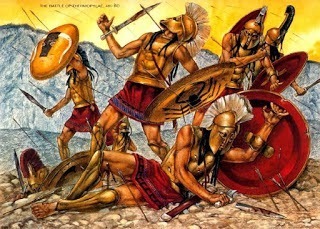
480 BC The Persian army defeated Leonidas and his Spartan army at Thermopylae, Persia.
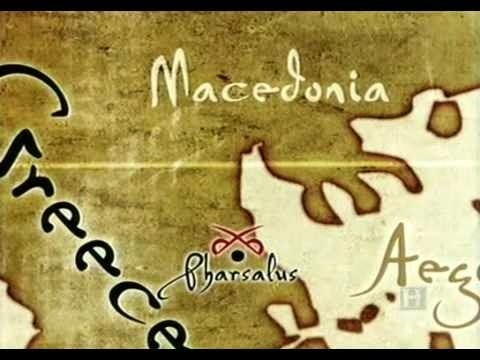
48 BC – Caesar's civil war: Battle of Pharsalus (Greece) – Julius Caesar decisively defeated Pompey at Pharsalus and Pompey fled to Egypt where he was later murdered. As a result Caesar had absolute control of Rome.
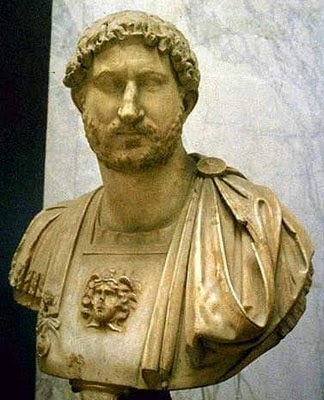
117 Hadrian became Roman Emperor upon the death of Trajan.
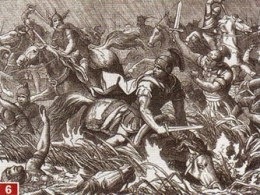
378 Gothic War: Battle of Adrianople – A large Roman army led by Emperor Valens was defeated by the Visigoths in present-day Turkey. Valens was killed along with over half of his army.
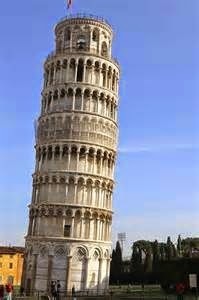
1173 Construction of the campanile of the cathedral of Pisa (Leaning Tower of Pisa) begun; it would take two centuries to complete.
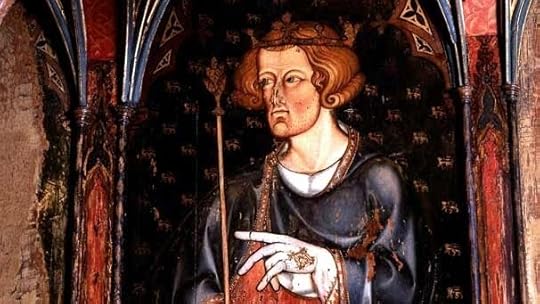
1274 Edward I was crowned King of England.

1483 Opening of the Sistine Chapel in Rome with the celebration of a Mass.


480 BC The Persian army defeated Leonidas and his Spartan army at Thermopylae, Persia.

48 BC – Caesar's civil war: Battle of Pharsalus (Greece) – Julius Caesar decisively defeated Pompey at Pharsalus and Pompey fled to Egypt where he was later murdered. As a result Caesar had absolute control of Rome.

117 Hadrian became Roman Emperor upon the death of Trajan.

378 Gothic War: Battle of Adrianople – A large Roman army led by Emperor Valens was defeated by the Visigoths in present-day Turkey. Valens was killed along with over half of his army.

1173 Construction of the campanile of the cathedral of Pisa (Leaning Tower of Pisa) begun; it would take two centuries to complete.

1274 Edward I was crowned King of England.

1483 Opening of the Sistine Chapel in Rome with the celebration of a Mass.

Published on August 09, 2014 05:46



